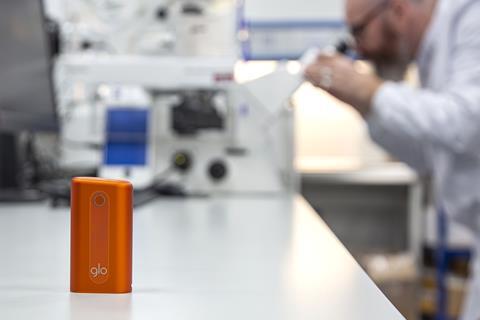
A year-long UK study by British American Tobacco has shown that smokers that switched to its heat-not-burn device showed “significant and sustained” improvements in several early indicators of lung disease, cancer and cardiovascular disease.
David O’Reilly, director, scientific research at BAT, said the study’s results were “the most important data we have ever generated about [BAT’s heat-not-burn device] Glo and for the tobacco heating product category in general”.
Participants in the study were UK-based smokers aged 23 to 55 in good general health. The smokers who did not intend to quit were put into groups that either continued smoking cigarettes or switched to using only BAT’s Glo device, while smokers who indicated they wanted to stop smoking were offered nicotine replacement therapy and access to a cessation counsellor. A group of ‘never smokers’ was also included to act as a control group.
The participants attended monthly clinic visits where samples of blood, urine and other measurements were taken. These samples were tested for ‘Biomarkers of Exposure’ (BoE) and ‘biomarkers of potential harm’.
The results, published in Internal and Emergency Medicine, showed smokers switching to Glo achieved “significant and sustained improvements in several indicators of potential harm associated with early disease development”, compared with smokers who continued to smoke.
“It provides much-needed new evidence about the size of the change and durability of the effect switching completely to Glo can have, and reinforces Glo’s potential as a reduced-risk product,” O’Reilly added.
The research is significant for the big tobacco companies in making the case for the health benefits of switching to their heat-not-burn devices.
While a reduced amount of cigarette smoke toxicants emitted by electronic devices is better proven, until now only two short-term randomised clinical studies relating to BoEs have been published, one in Japan and one in the UK. In each case participants were confined to a clinic for around one week, and randomly placed into groups that continued to smoke cigarettes, quit completely or switched to a heated tobacco device.
Similarly, in those studies, smokers who quit nicotine completely had the lowest levels of assessed BoEs, followed by those who switched to a vape, then those who switched to a heat-not-burn device. Participants who continued to smoke had the highest levels of BoEs.
BAT told The Grocer the latest findings would be used by the company as it made the case in favour of heat-not-burn to regulators.
“These important new data provide additional evidence that supports tobacco heating products as a better alternative to smoking,” said Sharon Goodall, group head of regulatory science at BAT. “We believe they provide anyone interested in tobacco harm reduction, including regulators, scientists or consumers, more reason to believe and have confidence in glo as a reduced-risk product.
“We will continue to engage with regulators around the world and will share these important new data, as part of our weight of evidence,” she added.
Of cigarette smoking alternatives, vaping is by far the most popular in the UK. The market was worth just over £345m in the mults last year [NielsenIQ]. By contrast, heated tobacco was worth just over £40m in supermarkets [IRI]. BAT, Imperial, Philip Morris and JTI offer heat-not-burn devices. According to ASH, current prevalence of heat not burn products in the UK is estimated to be extremely low, at less than 1% of nicotine users.



















No comments yet